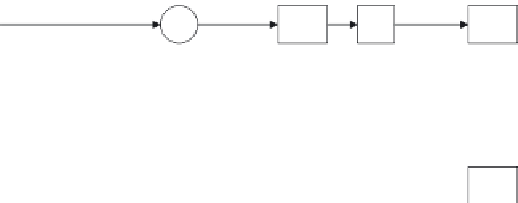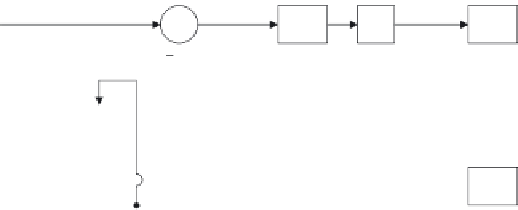Cryptography Reference
In-Depth Information
Input video sequence
Input video sequence
+
+
Rate
Control
Rate
Control
DCT
DCT
Q
Q
VLC
VLC
Difference
or
Intra picture
Difference
or
Intra picture
K
2
K
2
K
1
K
1
Buffer
Buffer
K
3
K
3
Compressed
bitstream
Compressed
bitstream
Motion
Estimation
Motion
Estimation
K
4
K
4
MV
Coder
MV
Coder
Q
-1
Q
-1
Motion vector
Motion vector
Motion
Compensation
Motion
Compensation
Reference
Frames
Reference
Frames
+
+
DCT
-1
DCT
-1
K
5
K
5
Predicted picture
Predicted picture
(a) Block diagram of video encoder
Decoded pictures
Decoded pictures
+
+
Compressed
bitstream
Compressed
bitstream
DCT
-1
DCT
-1
Q
-1
Q
-1
VLC
-1
VLC
-1
K
6
K
6
MV
Decoder
MV
Decoder
Reference
Frames
Reference
Frames
K
7
K
7
Motion
vector
Motion
vector
(b) Block diagram of video decoder
Fig. 2.17.
Block diagram of the generic video encoder and decoder.
manufacturers, service providers and the customers. Standards are the uni-
versal language that the different parties can communicate with one another.
In general, a video coding standard have two separate parts, the normative
parts and the non-normative parts. The normative parts must be implemented
as directed. The non-normative parts are recommendations or suggestions
outside of the standard, but are helpful in implementing the standard. In
many video coding standards, only the bit stream syntax (semantics) is the
normative part of the standard, which specifies the requirements related to the
process of decoding a bit stream encoded by that standard. The encoding part
is always non-normative and it doesnt address, therefore, the methods and
techniques required for encoding a video sequence. A standard with normative
decoding and informative encoding is usually called an open standard. The
open standard has the advantage of allowing for continuous improvements in
encoding techniques. It is possible that newly invented technologies can be
used to encode the video signal with better coding quality or e
ciency even
after the standard has been finalized long ago.
Although the standard does not specify how an encoder or a decoder should
be designed, it does provide the simulation software that consists of a software
decoder and encoder. This software is usually called the verification model or


























































